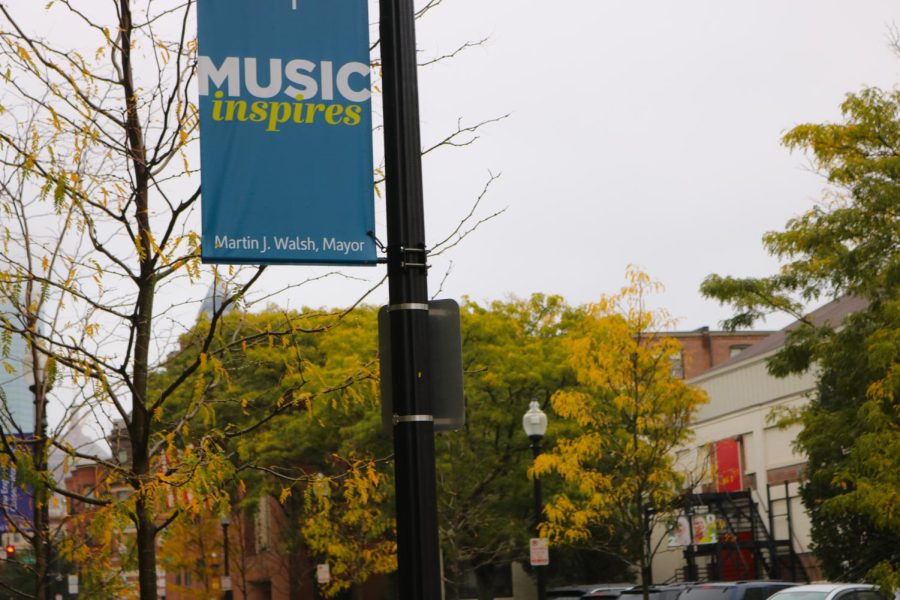Op-ed: White men overcrowd the orchestral industry
Orchestras should diversify to reflect the diverse talent present within the music industry.
November 3, 2021
When you think of amazing classical composers, who do you think of? Mozart, Tchaikovsky, Debussy, Beethoven, Haydn… but hold on a second. While rightfully esteemed, all of these figures are not diverse in ethnicity and gender. This issue contributes to why many have the false perception that composition was a skill that interested only aged white men and that others were reluctant to join in on this industry. Thus, for so many years, composers of different backgrounds have been failing to make themselves popular within the classical music community.
The challenge presented itself when my high school orchestra teacher told my class, “I don’t think there are any black composers… are there?” His ignorance, unfortunately, infects many Americans, and it’s not entirely their fault. Orchestras promote this incorrect idea because they rarely present compositions by those artists in the first place. Black composer Dr. Anderson said, “You always are identified because of race — there’s a certain different expectation… you know that you’re not going to be commissioned by the major artistic institutions like the New York Philharmonic and the Metropolitan Opera.”
Hence, it’s not so much about the scarcity of classical music created by people who aren’t white men. It’s about how orchestras, the leading advertisers of a composer’s work, scarcely feature works by individuals of other races.
Certainly, this exclusion also extends to women, as only 1.8 percent of music programmed by major U.S. orchestras was written by women. However, women make up about half of the world’s population, so why aren’t their creative projects showcased more across the world? This gender-biased music programming shadows any hope for young women who aspire to join a career in composition. However, music by esteemed women does exist, such as Rebecca Clarke’s rich Viola Sonata and Cécile Chaminade’s gorgeous Concertino for Flute and Piano. Evidently, the problem isn’t that women refuse to write classical music. The problem is that we default to showcasing music created by men to be featured across orchestras — we think that their works are what people want to hear, despite knowing that women have forged wonderful pieces too.
As for composers of other backgrounds, they are challenged by our refusal to accept the evolution of classical music as it merges with the traditions brought on by non-European cultures. Even though this phenomenon is inevitable with the United States as a growing melting pot, New York Times reporter William Robin outlines that black composers have received backlash from both African-American and white intellectual groups since the composers do not adapt to mainstream commercial trends. This initial outrage may be why orchestras are compelled to stick with white men’s repertoire in their programs: They just want to play it safe for the sake of an audience’s interest.
The dominance of white men in the classical world extends past the compositions themselves, for they affect other orchestral aspects such as the conducting industry. Tom Huizenga of NPR highlights that a study in 2014 by the League of American Orchestras found only a small percentage of musicians in American orchestras — less than 2% — are African American, while white individuals still constitute the vast majority of the musician population. This statistic would make it seem that only white men hold the capacity to be creatively intelligent enough to lead an orchestra, which is ludicrous, but the notion is not going to deteriorate anytime soon if white men continue to dominate the classical atmosphere.
If we were to normalize people of diverse backgrounds holding classical positions, perhaps more individuals would feel less intimidated to engage in the same sort of work done by Mozart, Beethoven and all the other renowned composers of the past. I cannot deny white men have generated splendid works that instill me with intense euphoria, mentally transporting me to fields of soft flowers and warm sun rays shining on my face. But these vivid sentiments also exist in works such as Clarke’s and Chaminade’s, yet our insistence on keeping orchestras and their classical programs dominantly white impedes us from hearing masterpieces from people of diverse backgrounds
If you are a woman or individual of color nervous about working in the orchestral industry, remember that no social construct should stop you from chasing your dreams. As more women and people of diverse races generate work, the more we can pressure the dominance of white men in orchestras and the greater our chance to end the normalization of their prevalence. The United States is a country filled with talented people who are of different ethnicities, races, sexual orientations, genders and more. Orchestras, such as Northeastern University Symphony Orchestra, or NUSO, and their students should take charge and demonstrate that classical music is not just for the minds of white men. Suggest to your conductors that they should integrate music from people of various backgrounds into their programs, which would diversify the compositions that audiences will eventually hear. Never tell a woman or an individual of color that they cannot pursue a career in music. Music is full of color, and the diversity of individuals behind the art should reflect music’s infinite assortments of creativity.
Jethro Ronald Lee is a first-year biochemistry major with minors in music and sociology. He can be reached at lee.jet@northeastern.edu.







